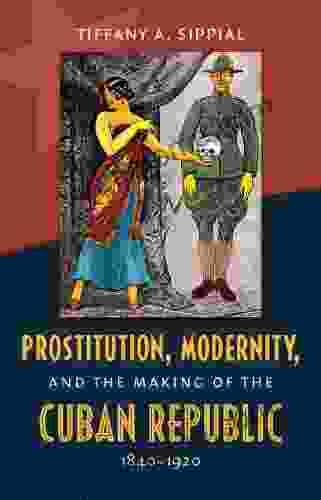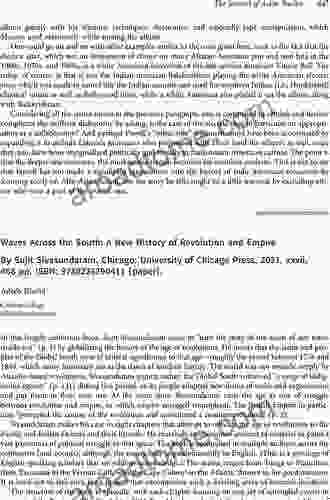Thermodynamics and Statistical Mechanics: A Journey into the Classical Theoretical Physics

The fields of thermodynamics and statistical mechanics form the bedrock of classical theoretical physics. They provide a comprehensive framework for understanding the behavior of matter and energy at both the macroscopic and microscopic levels. Thermodynamics deals with the macroscopic properties of matter, such as temperature, pressure, and volume, while statistical mechanics delves into the microscopic world of atoms and molecules to explain these properties.
Thermodynamics is the study of heat and energy, and its implications for macroscopic systems. It is founded on three fundamental laws:
- Zeroth Law of Thermodynamics: If two systems are each in thermal equilibrium with a third system, then they are in thermal equilibrium with each other.
- First Law of Thermodynamics: The total energy of an isolated system remains constant, although it may be transferred between different forms.
- Second Law of Thermodynamics: The entropy of an isolated system can never decrease over time.
These laws govern the behavior of all physical systems, from simple gases to complex biological organisms. Thermodynamics has wide-ranging applications in engineering, chemistry, and other scientific disciplines.
4.1 out of 5
| Language | : | English |
| File size | : | 5969 KB |
| Text-to-Speech | : | Enabled |
| Screen Reader | : | Supported |
| Print length | : | 476 pages |
Statistical mechanics bridges the gap between thermodynamics and the microscopic world. It explains the macroscopic properties of matter by considering the behavior of its constituent particles. Statistical mechanics postulates that matter consists of a large number of particles that are in constant motion. By understanding the statistical distribution of these particles, we can derive the macroscopic properties of the system.
Statistical mechanics is based on statistical ensembles, hypothetical sets of possible microstates that can be used to describe a system. The most common ensembles include:
- Microcanonical Ensemble: The system has a fixed number of particles, volume, and energy.
- Canonical Ensemble: The system has a fixed number of particles and temperature.
- Grand Canonical Ensemble: The system has a fixed temperature and a reservoir of available particles.
Using these ensembles, statistical mechanics can derive thermodynamic properties such as entropy, Gibbs free energy, and heat capacity.
The fields of thermodynamics and statistical mechanics have countless applications in various scientific and engineering disciplines, including:
- Power Generation: Thermodynamics is essential for designing and optimizing power plants that convert heat into electricity.
- Refrigeration and Air Conditioning: Statistical mechanics principles are used to create cooling systems that remove heat from enclosed spaces.
- Chemical Engineering: Thermodynamics and statistical mechanics help engineers optimize chemical reactions and processes.
- Materials Science: Statistical mechanics is used to understand the behavior of materials at the atomic and molecular level, aiding in the development of new materials.
- Astrophysics: Thermodynamics and statistical mechanics are used to study the behavior of stars, galaxies, and other celestial bodies.
The foundations of thermodynamics and statistical mechanics were laid down by scientists throughout history. Notable figures include:
- Sadi Carnot (1796-1832): Developed the concept of a reversible heat engine, establishing the basis for the first law of thermodynamics.
- James Clerk Maxwell (1831-1879): Developed the Maxwell-Boltzmann distribution, a fundamental statistical distribution used in statistical mechanics.
- Ludwig Boltzmann (1844-1906): Developed the Boltzmann distribution, another key statistical distribution in statistical mechanics.
Thermodynamics and statistical mechanics are indispensable tools in classical theoretical physics. They provide a comprehensive framework for understanding the behavior of matter and energy, both at the macroscopic and microscopic levels. Their wide-ranging applications in scientific and engineering disciplines continue to drive innovation and technological progress.
If you are embarking on a journey to delve into these fascinating fields, our book, "Thermodynamics and Statistical Mechanics Classical Theoretical Physics," is an invaluable resource. It offers a comprehensive exploration of the fundamental principles, applications, and historical developments of these essential subjects.
4.1 out of 5
| Language | : | English |
| File size | : | 5969 KB |
| Text-to-Speech | : | Enabled |
| Screen Reader | : | Supported |
| Print length | : | 476 pages |
Do you want to contribute by writing guest posts on this blog?
Please contact us and send us a resume of previous articles that you have written.
 Book
Book Novel
Novel Page
Page Chapter
Chapter Text
Text Story
Story Genre
Genre Reader
Reader Library
Library Paperback
Paperback E-book
E-book Magazine
Magazine Newspaper
Newspaper Paragraph
Paragraph Sentence
Sentence Bookmark
Bookmark Shelf
Shelf Glossary
Glossary Bibliography
Bibliography Foreword
Foreword Preface
Preface Synopsis
Synopsis Annotation
Annotation Footnote
Footnote Manuscript
Manuscript Scroll
Scroll Codex
Codex Tome
Tome Bestseller
Bestseller Classics
Classics Library card
Library card Narrative
Narrative Biography
Biography Autobiography
Autobiography Memoir
Memoir Reference
Reference Encyclopedia
Encyclopedia Stephen Breen
Stephen Breen Molly Dresner
Molly Dresner Walther Grot
Walther Grot Chauncey W Crandall
Chauncey W Crandall Mark Beckner
Mark Beckner Teresa Rodriguez
Teresa Rodriguez Zijin Chen
Zijin Chen D E Stevenson
D E Stevenson Tosca Reno
Tosca Reno Ryan Becker
Ryan Becker Xist Publishing
Xist Publishing Timothy Snyder
Timothy Snyder Trini Foster Publishing
Trini Foster Publishing Tracy Dorr
Tracy Dorr Steve Cage
Steve Cage Scott Eyman
Scott Eyman Summerita Rhayne
Summerita Rhayne Stephen Polgar
Stephen Polgar Stephanie Nauli
Stephanie Nauli Till Geiger
Till Geiger
Light bulbAdvertise smarter! Our strategic ad space ensures maximum exposure. Reserve your spot today!

 Efrain PowellFind Emotional Healing And Personal Transformation After This New Transition...
Efrain PowellFind Emotional Healing And Personal Transformation After This New Transition...
 Thomas PowellEmbark on an Unforgettable Journey with Brown Sugar Babe Charlotte Watson...
Thomas PowellEmbark on an Unforgettable Journey with Brown Sugar Babe Charlotte Watson... Cooper BellFollow ·7.6k
Cooper BellFollow ·7.6k John UpdikeFollow ·6.1k
John UpdikeFollow ·6.1k Jorge AmadoFollow ·3.8k
Jorge AmadoFollow ·3.8k Robert Louis StevensonFollow ·10.7k
Robert Louis StevensonFollow ·10.7k Robert FrostFollow ·10.5k
Robert FrostFollow ·10.5k Davion PowellFollow ·7.1k
Davion PowellFollow ·7.1k Boris PasternakFollow ·12.8k
Boris PasternakFollow ·12.8k Winston HayesFollow ·9.7k
Winston HayesFollow ·9.7k

 Timothy Ward
Timothy WardSteamy Reverse Harem with MFM Threesome: Our Fae Queen
By [Author...

 Cody Blair
Cody BlairThe Ultimate Guide to Energetic Materials: Detonation and...
Energetic materials are a fascinating and...

 Kenzaburō Ōe
Kenzaburō ŌeProstitution, Modernity, and the Making of the Cuban...
By Emily A....

 Kirk Hayes
Kirk HayesUnveil the Enchanting World of The Rape of the Lock by...
Alexander Pope's epic...

 Ivan Turgenev
Ivan TurgenevTantric Quest: An Encounter With Absolute Love
Embark on a Tantric Quest to...

 Gary Reed
Gary ReedThe Darwin Awards: Evolution in Action
The Darwin Awards are a...
4.1 out of 5
| Language | : | English |
| File size | : | 5969 KB |
| Text-to-Speech | : | Enabled |
| Screen Reader | : | Supported |
| Print length | : | 476 pages |







